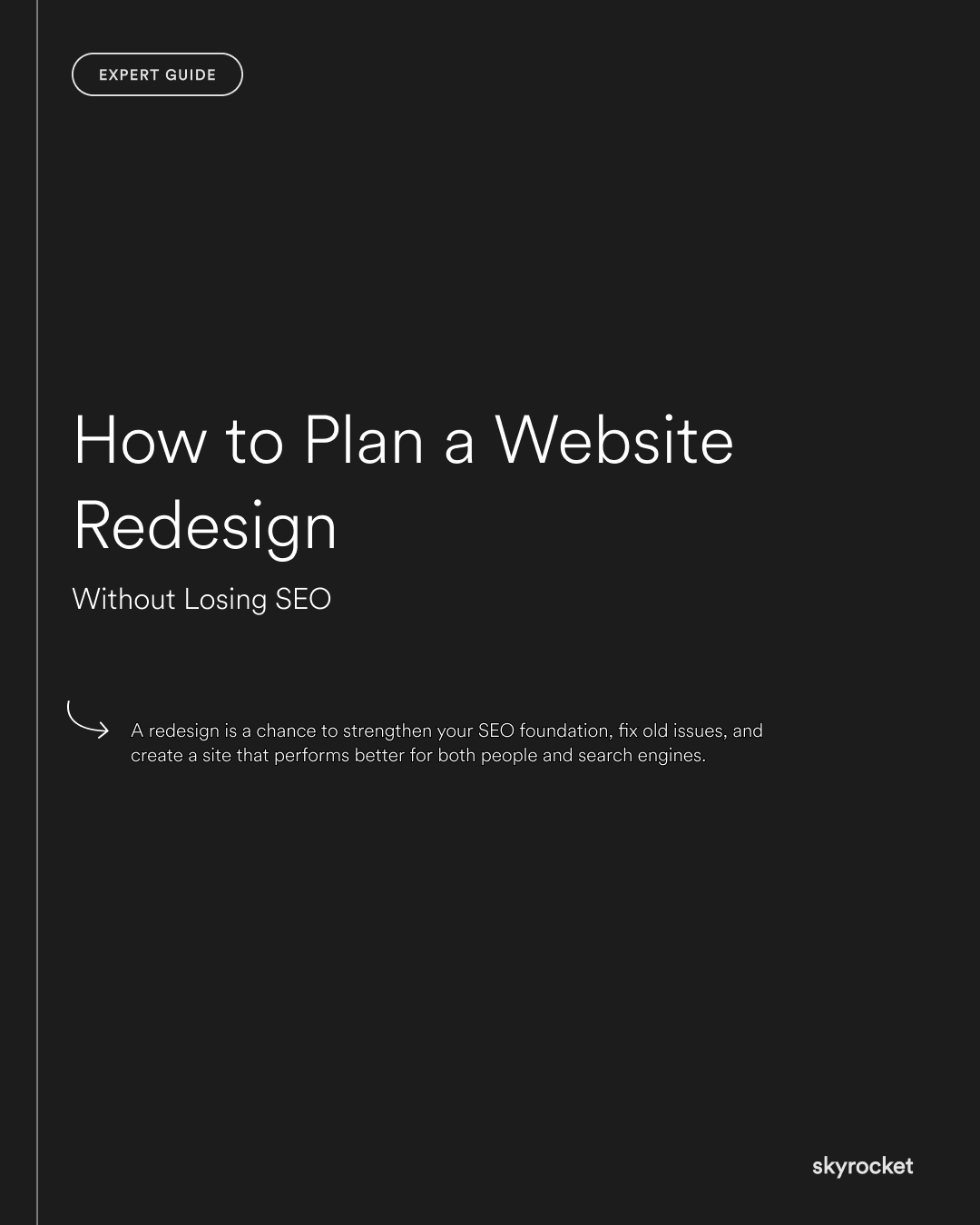SEO isn’t just about getting higher on Google. It’s about making sure customers can find you in the moments that matter. When someone searches for your services, you want to show up, not your competitor.
The danger during a redesign is that changes to site structure, content, or technical setup can break the signals Google uses to rank you. If those signals vanish, so can your visibility.
Done well, though, a redesign is a chance to strengthen your SEO foundation, fix old issues, and create a site that performs better for both people and search engines.
Key Tip: Most SEO losses during a redesign come from one thing: broken or changed URLs without proper redirects. Protect your URLs and you protect your rankings.
Common SEO Mistakes During a Redesign
Here are the traps businesses often fall into:
- Deleting or changing URLs without redirects. Old links break. Google can’t find your pages, and traffic tanks.
- Cutting content too aggressively. Less content means fewer opportunities to rank. If you strip out valuable pages, you may lose your foothold.
- Ignoring metadata. Titles and descriptions are small but powerful. If they’re lost or poorly rewritten, click-through rates suffer.
- Messy site structure. If navigation changes confuse Google or users, rankings can dip.
- Forgetting speed and mobile. A redesign that looks good but loads slowly or struggles on phones will be penalised in search.
How to Plan Your Redesign Without Losing SEO
Here’s a step-by-step approach you can use or share with your web team.
1. Audit your current site
Before you touch anything, understand what’s working now.
- Check which pages bring in the most traffic.
- Review your current rankings for important keywords.
- Note which backlinks (other sites linking to you) drive value.
These are your SEO assets, and they need to be protected.
2. Map your URLs
Make a list of every current URL. When you redesign, each of those should either stay the same or be redirected to a relevant new page. This is the single most important step to avoid traffic loss.
3. Keep your content strong
Don’t throw out content just because you want a cleaner design. Focus on quality, not quantity, but keep valuable pages that bring in visitors. Refresh and improve them if needed, but don’t cut them blindly.
4. Review site structure
A redesign is a good time to simplify and improve navigation. Just make sure it stays logical and easy for both people and Google to crawl. Categories and subpages should be clear, not buried.
5. Optimise metadata
Check that every page has a unique, descriptive title and meta description. This is what shows in Google search results and it heavily influences click-through.
6. Prioritise speed and mobile
Google ranks based on experience as well as content. If your new site loads fast, works on mobile, and feels simple to use, you’ll see the benefit.
7. Test before launch
Don’t flick the switch and hope for the best. Test your new site in a staging environment. Run checks for broken links, missing redirects, and duplicate content before you go live.
8. Monitor after launch
Once the new site is live, keep a close eye on your analytics. Look for changes in traffic, rankings, and conversions. If you spot a dip, act quickly.
Practical Things You Can Do Now
Even if your redesign is months away, you can start laying the groundwork today:
- Export a list of all current URLs.
- Identify your top 20 traffic-driving pages.
- Back up your site analytics so you have a clear “before” picture.
- Gather a shortlist of the keywords that matter most for your business.
- Check your current site speed with a free tool like PageSpeed Insights.
What to Do Now: Your SEO-Safe Redesign Checklist
Here’s a quick summary you can keep handy:
- Audit your current site for high-value pages and keywords.
- Map every URL and plan redirects where needed.
- Keep valuable content, don’t cut blindly.
- Simplify navigation but keep structure logical.
- Write unique titles and meta descriptions.
- Optimise speed and mobile experience.
- Test thoroughly before launch.
- Monitor performance closely after launch.
If you cover these bases, you’ll keep your SEO intact and may even improve it.
The Bottom Line
A website redesign is a big investment. Done poorly, it can undo years of SEO work. Done well, it can lift your visibility, improve performance, and give you a site that works harder for your business.
At Skyrocket, we build Webflow and Shopify sites with SEO baked in, not bolted on. If you’re planning a redesign and want to protect your traffic while levelling up your site, let’s talk.



